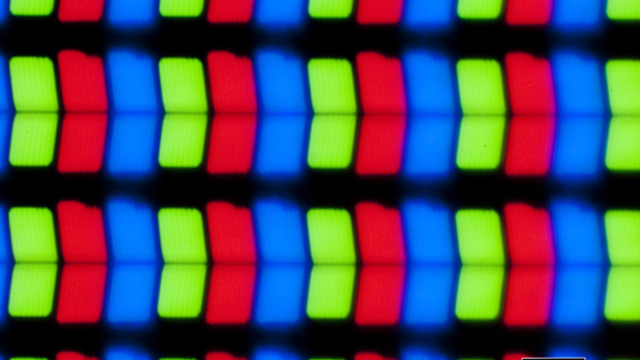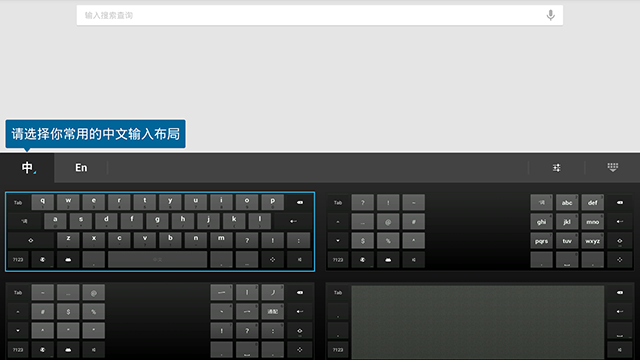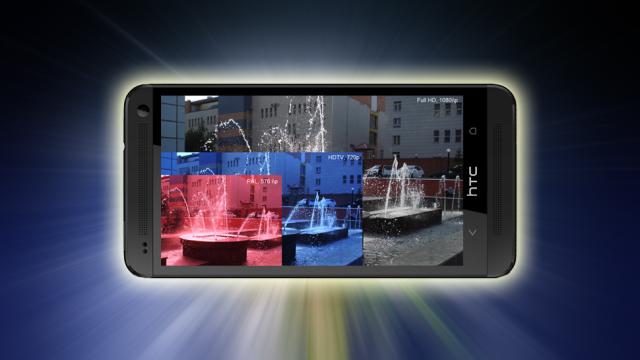Dear Lifehacker, I’m in the market for a new phone, and I want to get something with a nice display. Do I really need something with 1080p? That seems like a lot for just a 5-inch screen, but everyone seems to be advertising it. Sincerely, High-Def Curiosity
Dear HDC,
If 1080p in a phone sounds like a lot, that’s because it is. When the first iPhone with a “retina display” came out, it packed a 3.5-inch screen with a resolution of 960×640, giving it 326 pixels per inch (or ppi). Notably, when Apple increased the physical size of the iPhone to four inches, it also increased the resolution to 1136×640, which is still 326ppi. In most cases, 300ppi or so exceeds what the human eye is able to distinguish at a normal viewing distance (which is what Apple’s “retina” is supposed to refer to).
A 1080p phone, on the other hand, has an insane amount of pixels in comparison. In a 5-inch phone, a display of 1920×1080 has a whopping density of 440ppi. If you go down to, say a 4.7-inch phone like the HTC One, you reach 468ppi. That’s a resolution that’s about 50 per cent higher than what most human eyes can readily distinguish under normal usage. You can probably see pixels if you squint really close, but is there any real benefit to going up this high?
High Resolution Displays Use More Battery Power

It’s impossible to add more pixels to a device without needing power to run them. Some types of panels like AMOLED only light up pixels as they’re needed, which means you can conserve some power by using darker themes, but LCD displays will light them all up no matter what, which requires more juice. Not only to physically turn them on but also run the processor to account for the added complexity (which we’ll come back to in a bit).
Just how much extra power does it take? Well, when Apple released the third-generation iPad with “retina” (here defined as 264ppi), it came with a whopping 11,666mAh battery, which was 70 per cent larger than the battery in the previous generation. However, it still only promised the same 10 hours of use. Why? Well, it would be oversimplifying to say it’s solely because of the new display, but it’s also correct to say that doubling the pixel density over the previous tablet (132ppi for the iPad 2) would require a significant increase in power consumption.
You can somewhat see this reflected in Android phones as well. While Android phones vary wildly in battery size, the ones that last the longest are also typically the ones with the biggest batteries. LaptopMag rated the LG G2 as the Android phone with the best battery life around. It also carries a 3000mAh battery. Comparatively, the Moto X has a 720p display with 2200mAh battery. Both phones will run a full day (and the G2 can actually run longer than that), but larger batteries don’t make phones more efficient. They’re more akin to Hummers with large tanks than a fuel-efficient hybrid.
High-Resolution Displays Use More Processing Power

While powering all those pixels will have a direct effect on battery life, they’ll have to go through some processing power on the way. How much is difficult to gauge since there are so many factors that affect performance and efficiency in software. However, as one independent game developer explained to us, increasing the number of pixels in a display will always tax the GPU more:
These higher res screens tax fragment shaders (which do the processing for each pixel) on the GPU more. That means you get worse battery life for the same GPU/battery because for all applications more pixels need to be processed. It also means that in anything that actually gets near the limits of the hardware you have (primarily games), you’re going to hit those limits much more quickly. Especially because, in games, the fragment shaders are, the vast majority of the time, going to be the primary bottleneck.
In most cases, we accept this trade-off because things look nicer. However, since the human eye can’t tell much of a difference between a 300ppi+ display and a 400ppi+ display, the extra processing power needed to run those pixels is mostly wasted. Ironically, having a higher resolution display can result in worse-looking graphics purely because the GPU is wasting time on rendering more raw pixels (that you probably can’t see), instead of allowing developers to use those resources on adding more elements or details (like the advanced particle systems, lighting effects, and texture mapping you see in advanced AAA games).
High Resolution Displays Are Good for CJK Characters (Maybe)

There are, however, a few benefits to having a high resolution display — like CJK characters. If you haven’t heard of CJK characters, then this benefit doesn’t apply to you. CJK stands for Chinese, Japanese or Korean characters. Unlike the Latin-based alphabet that consists of a small collection of a couple dozen or so distinct symbols that create words based on combinations, CJK symbols can be distinct words on their own and potentially bear striking similarities to different words.
The question of whether or not super high-resolution displays actually aid in reading CJK characters is, as with anything, highly subjective. However, text is one of the first things to become illegible at low-resolutions, and CJK characters are considerably more complex than Latin ones.
Keep in mind that while it’s true in an overwhelming majority of cases that pixel density exceeding 300 is overkill, it depends heavily on how good your eyesight is and how far away you view your device. You probably don’t normally look at your phone three inches away from your face, but, if you do, 300ppi might not be enough.
If you have a need to read text using CJK characters, your best bet is to just look at a phone with a 1080p display yourself, hold it the way you normally hold your phone, and see how it feels for you. However, if you stick with Latin-based characters, it’s equally likely that trying to distinguish between two screens will just result in your brain playing tricks on you.
Ultimately, your phone choice is up to you, and none of them are particularly bad. However, the higher the pixel density, the more questionable the benefit is. Even if you feel a tangible benefit to a 1080p display in a 5=inch phone, it won’t stop there. LG, for example, recently showed off a 5.5-inch display with a mind-boggling 538ppi. Arguments about viewing distances, special characters and “retina” definitions aside, there’s an upper limit for phone displays and we’re straddling that line now. Chances are that battery life and performance should be a much higher priority for most consumers.
Cheers
Lifehacker
Got your own question you want to put to Lifehacker? Send it using our [contact text=”contact form”].

Comments
9 responses to “Ask LH: Do I Really Need A 1080p Display On My Smartphone?”
I’ve been harping on about this for quite a while now, since the first phones to offer full HD displays hit the market.
On a device that has a screen that’s only 5 inches or less, full HD (1920×1080) is complete overkill. Most people will not notice any difference at all. On larger screens, sure, it makes a noticeable difference, but on a phone? It’s very debateable.
It really isn’t. People who say they can’t tell the difference between a 1080 and 720 res panel on a 5″ panel are either lying or have poor eyesight. The difference between 720 and 1080 is not as dramatic as the 480 to 720 jump, but it’s still a noticeable difference. I’d be able to do the blind taste test. If you keep zooming out, text on a 720 display becomes unreadable far earlier than a 1080 one, the same goes for the ability to resolve adjacent elements. Another appreciable difference is the sharp transition between colour blocks on higher res displays.
There are downsides to having such a high res panel including (as mentioned), increased battery drain and processing power, but I’m getting more juice from the HTC than the one it replaced. Notch it up to engineering, newer chip efficiency, or tighter chassis, but this “1080p phones run slow and have shitty battery life” talking point is a canard.
PS (HDC): ‘Retina Display’ is just a buzzword. It’s been discredited, even by sources that generally plug Apple gear (http://www.cultofmac.com/173702/why-retina-isnt-enough-feature/). It’s a completely arbitrary definition that’s endlessly flexible, since it’s not even consistent within the same product categories. The iPhone is 326 ppi, the iPads are 264 or 326, and the laptops between 220 and 227. In all fairness, Apple’s not the only offender spreading the myth that there’s a ‘threshold’ ppi where suddenly, pixels become imperceptible and the image indistinguishable from reality. It reminds me of the film industry’s ongoing debate between digital and 35mm film. Even with 4K video capture, you’re taking in less information than film where its extractable data is limited only by the (literally) billions of grain atoms stuck on a 35mm slide.
TLDR: Retina is bullshit, manufacturers are lying to you. There’s no such thing as resolution ‘overkill’ and most of the FHD downsides on a phone have been engineered around with modern chips and larger batteries. Buy what you feel, including the inevitable 4K phone.
I’m aware of what “Retina” display is. I’m an avid Apple hater of their products AND their marketing. I didn’t need to be educated in that, and I don’t know what part of my post prompted that.
Just because I said that full HD on small phone screens doesn’t make a huge difference doesn’t suddenly imply that I think we’ve hit some kind of threshold and that I’m some kind of Apple fanboy.
I still stand by what I said too that on small screens, full 1080p IS barely noticeable at the optimal viewing distance.
Oh right, you’re one of those irrational tech company haters. Got it.
You said the difference between 720 and 1080 is barely noticeable on a 5″ phone, I’m saying it is. Even if you held them at crooked elbow/arm length from your face, anyone can tell that one screen is clearly superior. This isn’t my amazing eyesight, I’m sure even you would admit to the difference without perjuring yourself. The difference is there. There are downsides to FHD screens, but they’ve largely been offset by other improvements, so there is virtually no cost to getting a 1080 res screen these days.
“You said the difference between 720 and 1080 is barely noticeable” – I can’t see where he said 720 vs 1080 anywhere, he only said “On a device that has a screen that’s only 5 inches or less, full HD (1920×1080) is complete overkill”. I agree that larger screens you’d need higher resolutions, but I’d agree too that 5″ or less “most” people wouldn’t see a noticeable difference with some resolutions below 1080.. but maybe not all the way down to 720.
But yea, buy whatever you want … it’s just his opinion… no need for hate.
I am in complete agreement.
I own both generations of the Nexus 7, both have 7″, LED IPS screens.
The first model is 800×1280 (approx. 720p res.) and the second is 1200×1920 (approx. 1080p res.) and the difference in clarity is easily discernible.
I am not sure how much that would translate to a smaller 5″ screen experience, but I am willing to bet that I would still be able to notice it based on how drastic the difference is to me with those tablets.
TL;DR
15 years ago,phones had monochrome screens that did everything you need – with much less than 1080p. Ony of my faves was a Sony Ericcson that lasted 72 hours+ without a re-charge. Less than 1080p worked fine back then.
That’s cool dog.
Tell me out of those seventy two hours, how many of them were used watching YouTube videos. Or on Facebook? Or searching for wifi signals? Or giving you turn by turn directions?
Any modern phone could easily last three days if used the same amount that a phone back then would have been used for.
Give me a 1080p, 1.5″ display – in a head-mounted unit like the Sony “Personal 3D Viewer” and we’re cooking with gas. Otherwise, I find that WXGA is the sweet spot.
We don’t really need 1080p – yet.
As is the case with many things in the tech world, the need for incredibly hi-res/pixel dense hand-helds will become evident *after* people have had them for a while.
I thought smartphones were stupid for a long time. Now? I live off the things.